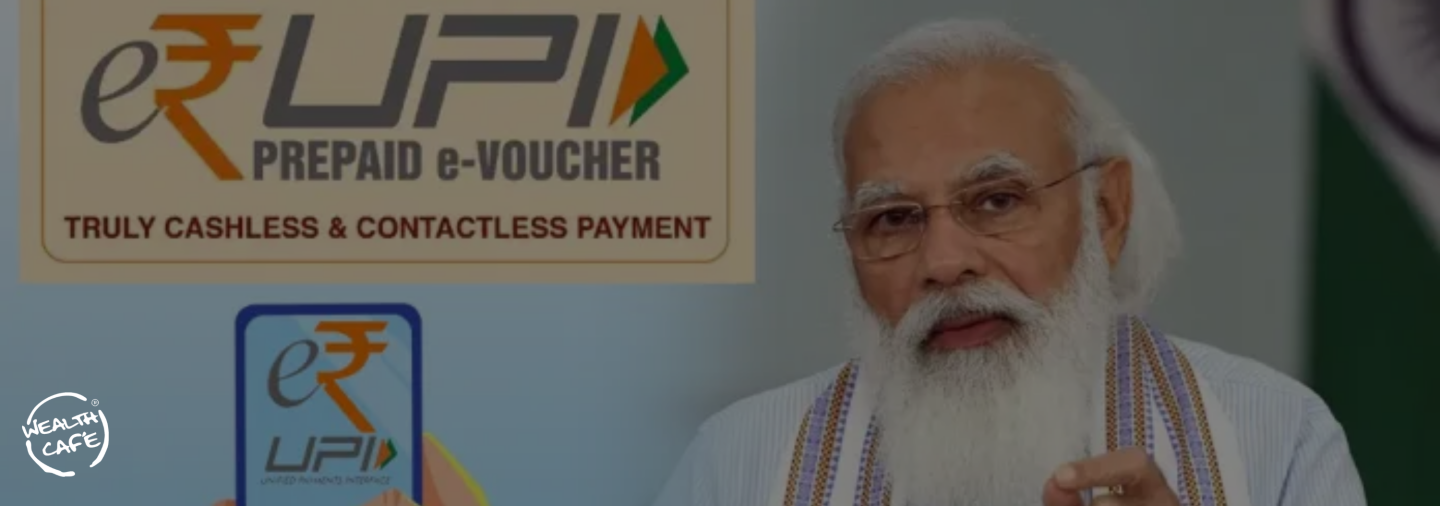There have been incidents of poor people being regularly robbed of their pensions and scholarships by corrupt banking correspondents who take their fingerprints citing different excuses. To eliminate such problems, on 2nd August 2021, the Prime Minister of India Mr. Narendra Modi launched a digital payment platform called e-RUPI Digital Platform.
The US, South Korea, and several other countries have used similar voucher-based incentives for welfare services.
What is e-RUPI?
e-RUPI is an e-voucher, which is cashless, contactless, and is a person and purpose-specific payment solution. A beneficiary will be required to show the QR code or the SMS message to the merchant, who will scan the same and a verification code will be sent to the beneficiary’s phone number. The latter will have to share the code with the merchant and the payment will be successful.
For instance, if you have an e-RUPI voucher for the Covid-19 vaccine, then it has to be redeemed for vaccines only. Before e-RUPI coupons are sent to the mobile numbers, the mobile number and identity of the citizen will be verified. This could also help in preventing corruption in the system (at least until the corrupt officials find a way to circumvent this too :P)
State Bank of India (SBI), ICICI Bank, HDFC Bank, Punjab National Bank (PNB), Axis Bank, and Bank of Baroda will provide both issuance and redemption facilities for e-RUPI coupons. Meanwhile, Canara Bank, IndusInd Bank, Indian Bank, Kotak Mahindra Bank, and Union Bank of India will only issue e-RUPI coupons for now.
As a one-to-many payments facilitator, it will help the government sharpen targeted welfare programs. The private sector will find it helpful to disburse non-cash benefits to employees and support focussed CSR programs. Later, individuals could use it for gifting.
What are the uses of e-RUPI?
Many services will be provided by the government through e-RUPI in the country. It can also be used to ensure leak-proof delivery of wellness services. To be used for leak-proof delivery of fertilizer subsidies, TB eradication programs, Ayushman Bharat, Pradhan Mantri Jan Arogya Yojana, Mother, and Child Welfare Schemes, etc.
The government has also talked about giving the benefit of this digital voucher for the private sector employee welfare and corporate social responsibility. This app is not released as a normal payment app. Soon you will be able to get many services through e-RUPI after it is released by the government today. E-RUPI will be spread across the country through SMS string or QR code.
- COVID Vaccine Registration
- SSC CGL Admit Card 2021
- Download Window 11 ISO file
- Upgrade Window 10/7 to 11
- OLA Electric Scooter Dealership
- Delta Plus Variant Symptoms
- T20 World Cup Schedule
- IPL Schedule 2021 Remaining matches
Benefits and loopholes
Aimed at bridging the digital gap among the unbanked population, the beneficiaries or users of this payment mechanism will not require a card, digital payments app, or internet banking access to redeem the voucher.
e-RUPI transaction process is said to be secure and will be keeping the details of the beneficiaries completely confidential, maintaining their privacy.
The introduction of the Covid vaccination voucher is also aimed at ramping India’s vaccination drive as e-RUPI allows beneficiaries to easily book appointments for the shots. However, with the beneficiary not required to disclose their identity, these vouchers are also likely to be claimed by other people.
With the help of the E Rupi application, digital payment has been done simply. Many institutes have shown their interest in this application. The adoption of e-RUPI in various government programs will enhance business efficiency, simplicity, transparency, and accountability in various programs with tax implications such as meals, education, travel, and health. So, if you want to enjoy this app, download it from the online interface.
| Official Portal | Click here |
| MPNRC Home | Click here |
e-RUPI opens up a world of opportunities to the government, people, and businesses to provide, avail, and pay for services seamlessly. You will soon be able to use e-Rupi Digital Payment System.
Through this article, we have provided you with all the basic details regarding e-RUPI digital payment. If you are still facing any kind of problem then you can write us your questions related to your e-Rupi Digital Payment in the comment box.

